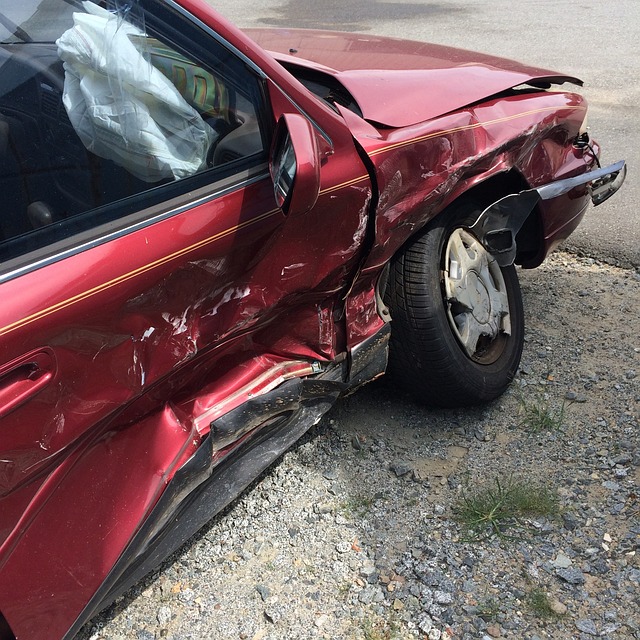We Now Offer Non-Surgical Spinal Decompression
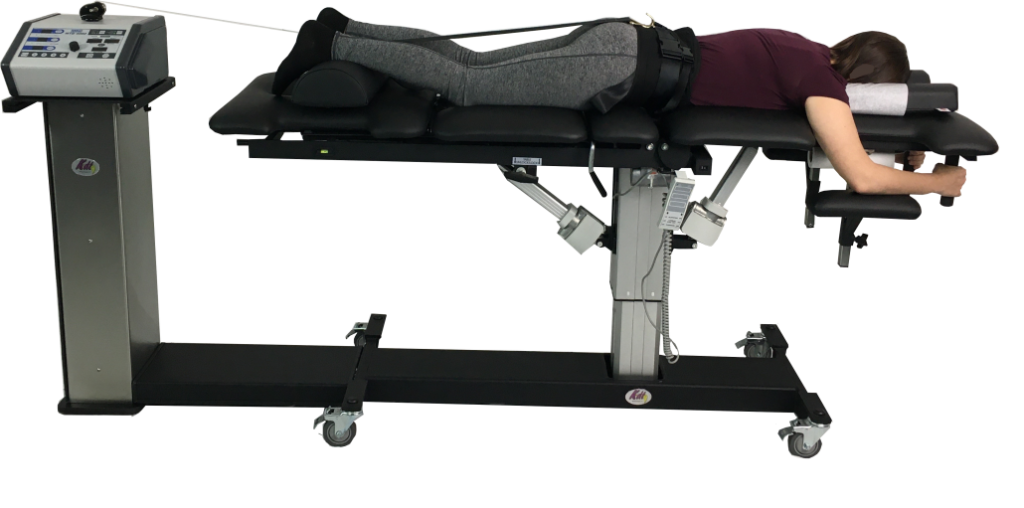
What is Non-Surgical Spinal Decompression?
Non-Surgical Spinal Decompression is an advanced therapy used to treat problems related to spinal discs. Decompression of the disc is accomplished by using a system of belts which attach to a pulley system on the machine. Gentle tension is added which lengthens the spine, decreases pressure in the disc, and removes pressure on painful impinged nerves.
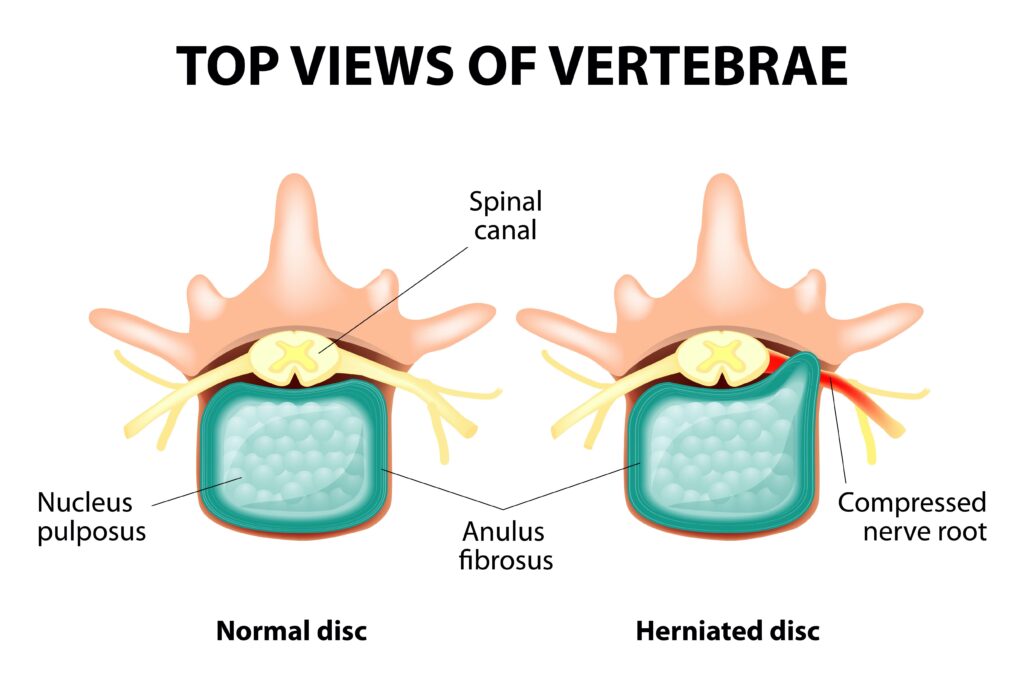
How Does Spinal Decompression Work?
During Decompression Therapy, computerized traction patterns gently stretch the spine and decompress spinal discs. Spinal Decompression creates negative pressure (“vacuum-effect”) in the disc. Because things tend to move from areas of high pressure to low pressure, this negative pressure helps to “suck” the Nuclear Pulposus back inside the Annulus Fibrosis of the damaged disc (see picture of discs above), relieving pressure on nerves. The negative pressure also pulls in fluids, oxygen, and nutrients, rehydrating and restoring nutrition to discs. Spinal experts believe the movement of fluids and nutrients into the disc facilitate the healing process of the disc.
A Decompression session consists of repeated cycles of gentle tension and rest. Decompression naturally happens to some extent when we lie down in bed each night. While lying on your back, disc pressures have been measured around +75 mmHg. But because machine-mediated Spinal Decompression Therapy can create negative pressure in the disc, around -150 mmHg, it is like expedited bed rest without the side effects of inactivity.
Who Can Benefit From Spinal Decompression?
Spinal Decompression Therapy is an FDA cleared drug-free, surgery-free procedure that effectively treats:
- low back pain
- neck pain
- radiating arm and leg pain
- headaches
caused by:
- bulging discs
- herniated discs
- sciatica
- stenosis or narrowing of nerve channels
- degenerative disc disease
- facet syndrome
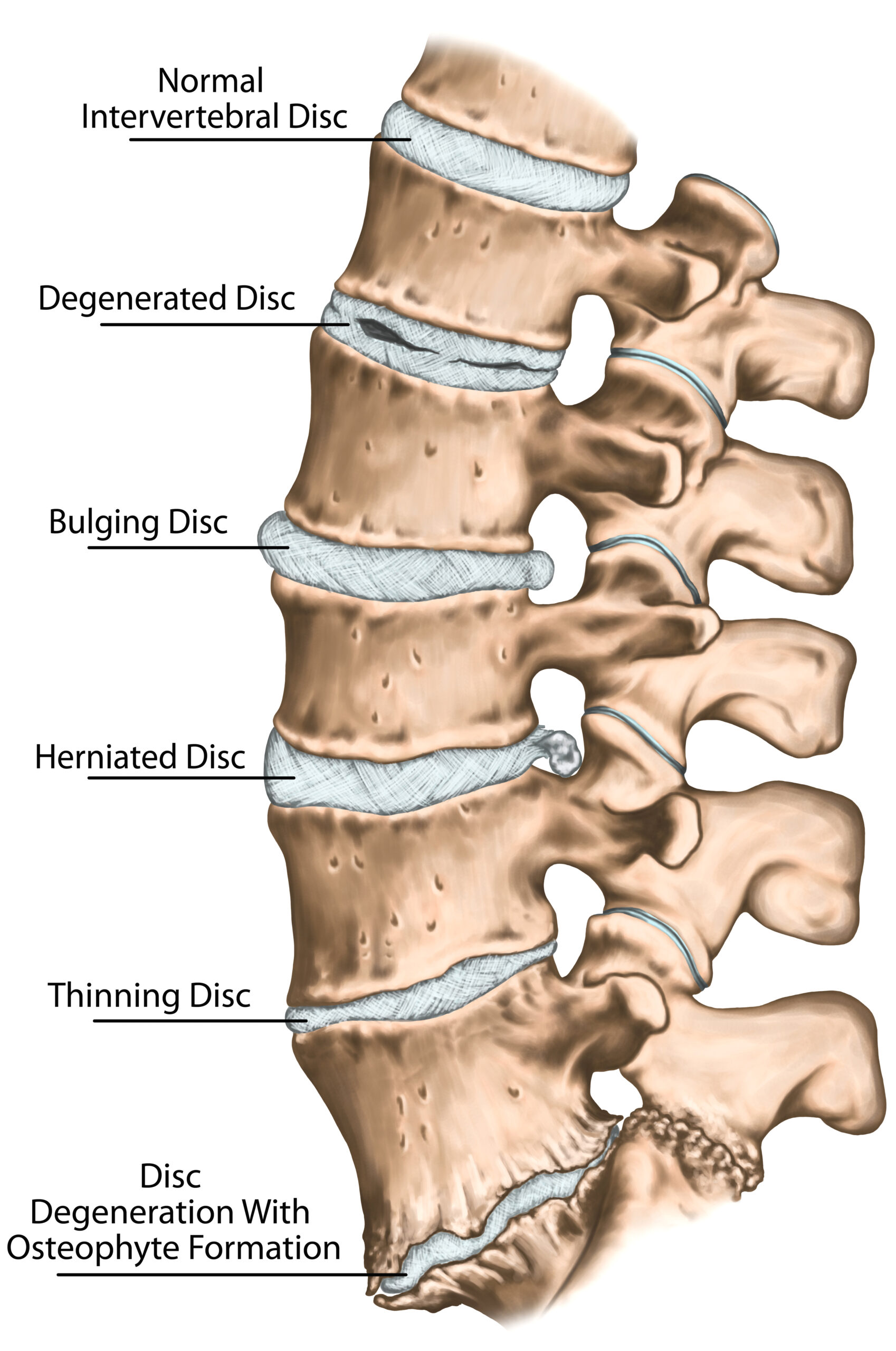
Before Surgery Try Spinal Decompression!
While back surgery may sometimes be the only solution, many health professionals feel strongly that surgery should be used as the last resort, only after trying conservative, noninvasive treatment options such as Chiropractic, Physical Therapy, and Spinal Decompression Therapy. Even with advances in surgical procedures, surgery does come with inherent risks, high costs, lengthy recovery times, and possible complications such as infection or surgical failure.
Failed Back Surgery Syndrome is a diagnosis used when surgery fails to give the patient relief or improvement of function. Research shows a failure rate of 30%-46% for a lumbar fusion surgery and 19%-25% for a simpler microdiscectomy procedure. Subsequent repeat or revision surgeries have progressively higher failure rates. One should consider all options before turning to surgery. Many who have had a failed back surgery can still benefit from Spinal Decompression Therapy. However, if you have artificial discs, bone implants, or any spinal hardware from previous surgeries, you are NOT a candidate for Spinal Decompression.
What Does Decompression Feel Like?
Decompression is usually quite comfortable and relaxing. Some people find it so relaxing that they have fallen asleep on the table. Most people say it feels like a gentle stretch in the area being treated. A common misconception is that it should be a forceful pull, stretching muscles. However, with Spinal Decompression, less is more. We use tested protocols, created by Dr. Jay Kennedy, the nation’s foremost authority on Spinal Decompression. The protocols allow us to use enough force to create negative pressure within the disc while keeping the muscles “quiet”.
While many patients feel initial relief after just a few sessions, others may not feel relief as quickly and should not be discouraged. Every case is unique and some problems are more chronic than others. Whether relief is fast or slow, it is important to stay on the treatment plan. We perform periodic reevaluations so we can adapt to your needs. Stopping treatment early can result in a return of symptoms, often worse than before, wasting time and money. Best results are achieved in committed patients, as discs take time to heal.
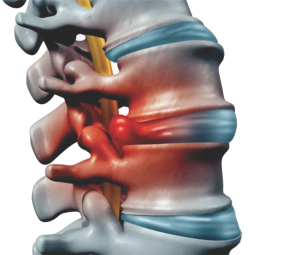
How Do I Know if I’m a Candidate for Non-Surgical Spinal Decompression?
We will do a thorough health history, evaluation and required X-rays to determine if we think Spinal Decompression will help you. Not all people are candidates for Spinal Decompression. Some things that disqualify a person include certain previous back/neck surgeries (having pins, plates, wires, rods, cages, screws, artificial discs, bone implants in your spine), pregnancy, osteoporosis (Dexa T-score -2.5 or worse), abdominal aortic aneurysm, cancer or spinal tumors, certain rare diseases, recent spinal fracture, or recent inguinal hernia.
Spinal Decompression works, given the chance. Having been around since 1993, there is plenty of research available (just ask us if you want some). Studies have shown a success rate of 86-92%! If accepted as a patient, follow through with the treatment plan for best results!
If you want to see if Spinal Decompression can help you, call our office to schedule or click on the link below.

